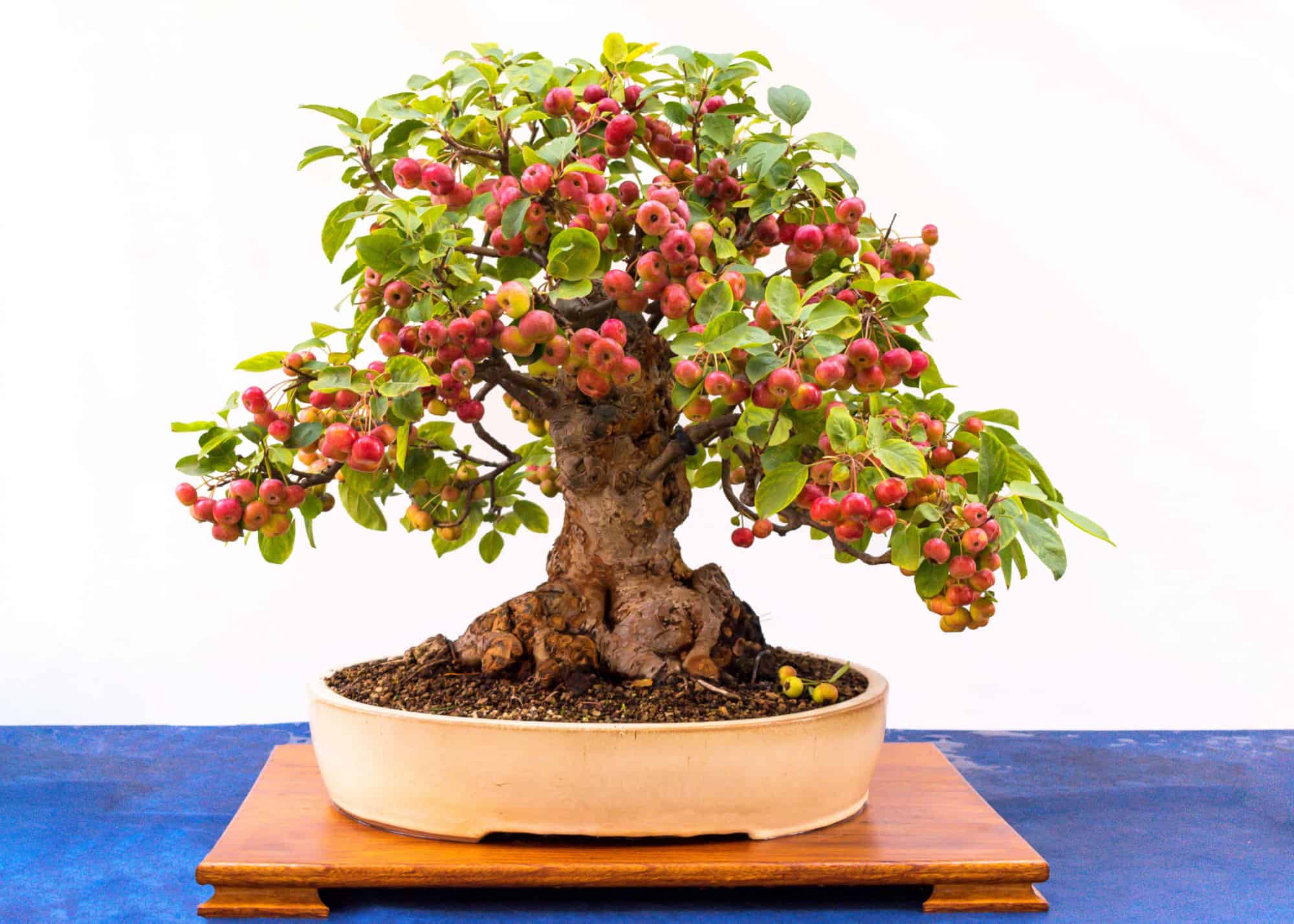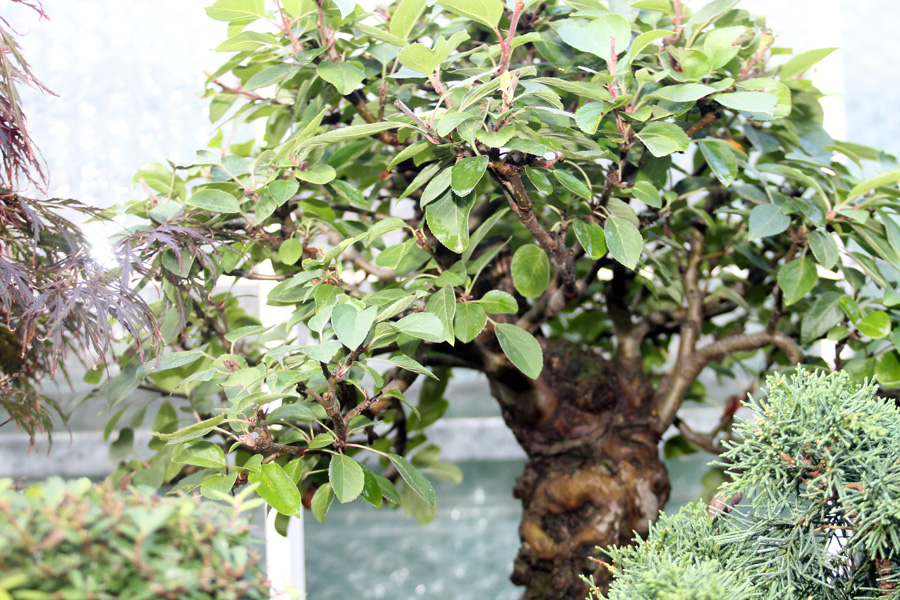Crabapple bonsai trees need regular watering and pruning to thrive. Ensure they receive plenty of sunlight and proper soil drainage.
Crabapple bonsai trees are a popular choice for bonsai enthusiasts due to their beautiful blossoms and ease of care. These miniature trees produce stunning flowers in spring, creating a captivating focal point. Regular watering is crucial, as crabapple bonsai trees prefer moist but well-drained soil.
Pruning helps maintain their shape and encourages healthy growth. Providing ample sunlight ensures they flourish and produce vibrant blooms. These trees also benefit from occasional fertilization during the growing season. With proper care, a crabapple bonsai tree can become a cherished addition to any bonsai collection, offering beauty and elegance year-round.

Credit: a-z-animals.com
Introduction To Crabapple Bonsai
The Crabapple tree has a rich history. It comes from Asia and Europe. People have grown it for many years. They love its beautiful flowers and tasty fruits.
Crabapple trees were popular in ancient gardens. They were symbols of beauty and health. Many cultures have stories about these trees. They are loved for their charm and strength.
Crabapple Bonsai trees have small, pretty flowers. These flowers come in pink, white, and red. The tree also produces small fruits. These fruits are colorful and can be red, yellow, or green.
The leaves of a Crabapple Bonsai are small. They turn bright colors in the fall. The tree has a lovely shape. It looks beautiful all year round.
Choosing The Right Crabapple Bonsai
Crabapple bonsai trees are beautiful and unique. The most popular varieties include the Japanese Flowering Crabapple and the Sargent Crabapple. The Japanese Flowering Crabapple has lovely pink blossoms. The Sargent Crabapple is known for its small, red fruits.
Another great option is the Prairifire Crabapple. It has stunning red flowers and dark fruit. Each variety offers different colors and fruit sizes. Choosing the right variety depends on personal preference.
Healthy specimens have strong trunks and vibrant leaves. Look for trees with no signs of pests or diseases. Leaves should be green and not wilted. A healthy root system is also crucial.
Check the roots by gently removing the tree from its pot. Healthy roots are white and firm. Avoid trees with brown or mushy roots. Ensuring the tree is healthy will help it thrive.
Ideal Environment
The Crabapple Bonsai Tree loves full sunlight. It needs at least 6 hours of sunlight each day. Place the tree where it gets morning sun and afternoon shade. Too much direct sunlight can damage the leaves. Indoor lighting must be bright and consistent.
Crabapple Bonsai Trees thrive in temperatures between 60°F and 75°F. They can tolerate cooler temperatures but should be protected from frost. High humidity is essential for their health. Mist the leaves to maintain moisture. Use a humidity tray if the air is dry. Ensuring proper temperature and humidity helps the tree stay vibrant and healthy.
Watering Techniques
Properly watering a Crabapple Bonsai Tree ensures healthy growth. Maintain consistently moist soil without overwatering to prevent root rot. Regular misting helps to mimic natural humidity levels.
Frequency And Amount
Water the Crabapple Bonsai tree regularly. The soil should be moist but not soggy. Watering every two days is usually enough. Check the soil before watering again. If the top inch is dry, it’s time to water.
Signs Of Overwatering
Look for yellow leaves. Overwatering can cause root rot. The soil may smell bad. Mushy roots are a bad sign. Reduce water immediately if these signs appear.
Soil And Fertilization
Proper soil and fertilization are crucial for the health of a Crabapple Bonsai tree. Use well-draining soil and apply balanced fertilizer monthly during the growing season.
Best Soil Mixes
Crabapple bonsai trees thrive in well-draining soil. A mix of akadama, pumice, and lava rock works well. The soil should retain some moisture but not stay soggy. This helps prevent root rot.
Nutrient Needs
Crabapple bonsai trees need balanced fertilizers. Use one with equal parts of nitrogen, phosphorus, and potassium. Apply the fertilizer every two weeks during the growing season. Reduce feeding in winter to prevent over-fertilization.
Pruning And Shaping
Pruning helps the tree stay healthy. Use sharp scissors for clean cuts. Remove dead branches first. Cut back new growth in spring. Always leave some leaves on the branches. This keeps the tree strong.
Wiring shapes the branches. Wrap wire around a branch. Bend it slowly into shape. Check the wire often. Remove it before it cuts into the bark. Defoliation helps create smaller leaves. Remove most leaves in summer. The tree will grow new, smaller leaves.
Pest And Disease Management
Common pests include aphids, spider mites, and scale insects. Aphids are small and come in many colors. Spider mites leave tiny webs on the tree. Scale insects look like small bumps on branches. Regular inspection helps catch pests early. Use insecticidal soap or neem oil for treatment. Strong water sprays can also remove pests.
Proper watering is crucial. Overwatering can lead to root rot. Make sure the soil is well-draining. Good air circulation helps prevent fungal infections. Remove fallen leaves and debris. Prune damaged or dead branches. Clean tools before use to avoid spreading disease. Keep the bonsai in a sunny spot to maintain health.

Credit: www.reddit.com
Seasonal Care Tips
Ensure proper watering and adjust sunlight exposure for your Crabapple Bonsai Tree during each season. Prune regularly to maintain its shape and health.
Spring And Summer
Water the tree daily. Prune the new growth to maintain shape. Fertilize every two weeks. Place the tree in a sunny spot. Watch for pests like aphids. Repot the tree every two years. Use well-draining soil. Pinch back new shoots to encourage branching.
Fall And Winter
Reduce watering to once every two weeks. Move the tree to a sheltered location. Protect the tree from frost. Stop fertilizing in the fall. Remove dead leaves and branches. Check for any signs of disease. Maintain good air circulation around the tree.
Repotting Guidelines
Repotting Crabapple Bonsai Trees ensures healthy root growth and vibrant foliage. Carefully remove old soil, trim roots, and replace with fresh, well-draining soil. Regular repotting every 2-3 years maintains the tree’s overall health and beauty.
When To Repot
Repotting is best done in early spring. This is when the tree is still dormant. The roots should have room to grow. Repot every two to three years. Younger trees might need more frequent repotting.
Steps For Successful Repotting
Prepare a new pot with fresh soil. Remove the tree from its old pot. Gently shake off old soil from the roots. Trim any long or dead roots. Place the tree in the new pot. Add soil around the roots. Water the tree well after repotting.

Credit: www.allthingsbonsai.co.uk
Conclusion
Caring for a Crabapple Bonsai Tree can be rewarding and fulfilling. Follow the tips mentioned for optimal growth. Regular watering, proper sunlight, and timely pruning are essential. With dedication, your bonsai will flourish beautifully. Enjoy the process and watch your tree thrive.
Happy gardening!

